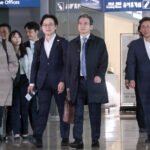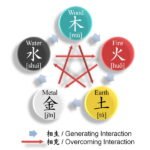Introduction to the Imjin War
The Imjin War, also referred to as the Japanese invasions of Korea, took place from 1592 to 1598 and marked a significant conflict in East Asian history. This war was instigated by Toyotomi Hideyoshi, a prominent Japanese leader who sought to expand his influence in the region. Hideyoshi’s ambitions were fueled by a desire to unify Japan under his rule and to further his expansionist policies, which culminated in the decision to invade Korea as a stepping stone to conquering China.
The political landscape in Korea during the late 16th century was characterized by the stability of the Joseon Dynasty, yet it was also riddled with internal conflicts and power struggles among the ruling elites. These political dynamics created vulnerabilities that could be exploited by external forces, particularly as Japan was undergoing significant changes in governance and military capability. The motivations behind the Imjin War were not solely rooted in territorial conquest; they also encompassed the desire for resources and a strategic advantage over regional rivalries.
Major Battles and Strategies of the Imjin War
The Imjin War, a pivotal period in Korean history that commenced in 1592, saw a series of major battles characterized by both naval confrontations and ground engagements. One of the most significant clashes occurred during the Battle of Hansan Island, where Admiral Yi Sun-sin showcased his exceptional naval capabilities. Using innovative tactics such as the “turtle ship,” a prototype of an armored warship, Yi Sun-sin successfully ambushed the Japanese fleet. His strategic use of the geography surrounding Hansan Island allowed the Korean forces to dominate the engagement, marking a crucial turning point for the resistance against Japanese advances.
Another notable confrontation was the Defenses of Busan, where defensive strategies were employed to repel Japanese forces seeking to establish a foothold. The city of Busan, being one of the first targets during the initial invasion, became a focal point for Korean resistance. The Korean defenders, although initially outmatched, utilized guerilla tactics and built fortifications that thwarted various Japanese attempts to capture the area. In this regard, the integration of terrain knowledge into military strategy proved vital for the Korean forces.
On the Japanese side, military strategies revolved around rapid advancement and overwhelming force. The early successes can be attributed to their well-organized army and superior weaponry, including firearms and organized infantry formations. However, as the war progressed, the lack of local support and the determination of the Korean forces led to increasing difficulties for the Japanese troops. The war saw a shift from large-scale battles to smaller engagements, where Korean guerilla fighters disrupted supply lines and communication routes, complicating the Japanese logistics.
Ultimately, the major battles and strategies of the Imjin War highlighted the resilience of the Korean forces under leaders like Admiral Yi Sun-sin and the impact of strategic planning in warfare. The conflict not only shaped the immediate course of Korean history but also had long-lasting implications for the region’s political dynamics.
The Role of Foreign Powers
The Imjin War, which transpired between 1592 and 1598, was significantly influenced by various foreign powers, particularly Ming China and the Dutch East India Company. The conflict began when Toyotomi Hideyoshi, the Japanese warlord, launched an invasion of Korea, aiming to use it as a stepping-stone for further expansion into China. In response to this aggression, the Joseon Dynasty sought assistance from Ming China, which was a crucial ally during the war.
Ming China’s involvement was not merely a matter of regional stability; it was also a reflection of its strategic interests. By supporting Korea, the Ming court aimed to counterbalance Japanese ambitions and assert its dominance in East Asia. The Ming forces provided substantial military aid, including troops and logistical support, which proved vital in repelling Japanese forces from Korean territory. This collaborative effort culminated in several successful campaigns, such as the notable Battle of Haengju in 1593, where Korean and Ming troops achieved a remarkable victory over their adversaries.
In addition to the Chinese support, the role of the Dutch East India Company (VOC) merits consideration. The Dutch were primarily motivated by trade interests and aimed to establish a foothold in the region amidst the ongoing conflict. While their military involvement was limited compared to that of China, the Dutch provided crucial supplies and navigational expertise to the Koreans. Their actions exemplified the complex interplay of global trade and military engagement, allowing them to engage diplomatically with Korea while undermining Spanish and Portuguese dominance in the region.
This interplay of foreign powers significantly shaped the landscape of the Imjin War, creating a dynamic and multifaceted international environment. As the war unfolded, the alliances and rivalries among these nations highlighted the intricate web of geopolitical interests that defined this turbulent period in East Asian history.
Consequences of the Imjin War on Korea
The Imjin War, occurring between 1592 and 1598, had a profound and devastating impact on Korea, reshaping its landscape, society, and economy. The conflict resulted in widespread destruction, with cities being razed and farmland devastated. Historical accounts indicate that significant regions of the Korean Peninsula were left in ruins, leading to acute food shortages and famine. A substantial loss of life ensued due to both military engagements and the subsequent hardships faced by civilians, contributing to demographic shifts within the population.
The economic ramifications of the Imjin War were equally severe. Agricultural production plummeted as fields lay fallow, and the disruption of trade further exacerbated the suffering of the population. The decline in the agrarian economy forced many to abandon rural areas, leading to urban migration in search of better opportunities. The depletion of resources changed the economic landscape of Korea, compelling the Joseon Dynasty to seek new methods of recovery and resilience in the aftermath of the conflict.
In addition to economic challenges, the Imjin War prompted significant shifts in Korean societal structure. The devastation catalyzed changes within the military organization, as the need for a more robust defense system became critically apparent. Lessons learned from the conflict led to reforms in military strategy and infrastructure, fostering a sense of national identity that had previously been largely localized. Shared experiences of hardship, resilience, and the fight against the common enemy contributed to a newfound unity among different social classes.
Ultimately, the consequences of the Imjin War extended beyond the immediate destruction; it fundamentally altered the trajectory of the Joseon Dynasty, setting the stage for future interactions with Japan and reshaping Korea’s national identity amidst ongoing adversity.
The Joseon Dynasty: Recovery and Rebuilding
In the wake of the tumultuous Imjin War, the Joseon Dynasty faced significant challenges as it endeavored to recover and rebuild from the devastation that had been wrought upon its territories. The war, which spanned from 1592 to 1598, had resulted in profound loss of life and the destruction of numerous towns and infrastructures, necessitating comprehensive recovery efforts across political, cultural, and economic realms.
Politically, the Joseon Dynasty instituted various reforms aimed at restoring stability and governance. The central government sought to re-establish authority and control over the provinces, which had been left vulnerable during the conflict. This included reappointing local officials and reinforcing administrative structures to rebuild trust among the populace. In addition, lessons learned from the war prompted a reevaluation of military strategies. Emphasizing the need for a more robust defense, the Chosun leadership invested in fortifications and military training, fostering a renewed sense of security among the citizenry.
Culturally, the aftermath of the war also led to a renaissance of sorts within the Joseon Dynasty. There was a marked resurgence in the promotion of Confucian ideals, aimed at instilling a sense of moral rectitude and loyalty among the people. This cultural revival manifested itself in various forms of literature and art that celebrated national identity and resilience, which served to unify a fragmented society. Scholars and intellectuals played a pivotal role in this cultural renaissance, providing a framework for national reconstruction based on philosophical and ethical reflections.
Economically, the dynasty implemented initiatives to rehabilitate agricultural production, which had suffered drastically during the conflict. Land reclamation projects, coupled with government incentives for farmers, facilitated a gradual resurgence in agricultural output. Economic policies were also oriented towards trade expansion, reinvigorating internal markets, and fostering relationships with neighboring nations as an avenue for recovery. Such comprehensive rebuilding efforts reflected the Joseon Dynasty’s hopes for renewal, showcasing adaptability in the wake of adversity.
As stability began to return, a shift in attitudes towards military and foreign policy also emerged. The Joseon leaders recognized the necessity of diplomacy alongside military preparedness, leading to a more nuanced approach in navigating relationships with foreign powers. This transformation underscored the dynasty’s commitment to ensuring long-term stability in the region.
Cultural Shifts in the Post-War Joseon Dynasty
The aftermath of the Imjin War (1592-1598) catalyzed significant cultural transformations within the Joseon Dynasty, shaping the trajectory of Korean society. In the wake of this conflict, there was a profound reevaluation of national identity, primarily prompted by the traumatic experiences of war and foreign invasion. The devastation led to a resurgence of literary and artistic expression that sought to both memorialize the past and forge a cohesive national identity. Korean literature, particularly poetry and historical narratives, began to reflect themes of resilience, moral integrity, and the importance of unity against common threats.
Moreover, the war had repercussions on artistic production as well. Artists began to incorporate elements from their immediate experiences, thereby altering traditional forms. This era witnessed a focus on genres that emphasized national sentiment and cultural pride, marked by a move away from purely aesthetic pursuits towards more integrated expressions of Korean identity. The emergence of distinct styles in painting, which included dramatic landscapes and scenes depicting cultural heritage, highlighted a newly celebrated Korean ethos.
In the realm of ideology, Confucian thought gained further prominence in the post-war period. The Confucian ideals of loyalty, filial piety, and social hierarchy became more deeply ingrained as the ruling elite sought to stabilize the social order following the disruptions of the war. These ideas were not merely a reassertion of tradition; they became a lens through which the newly emerging nationalist sentiments were articulated. As a result, Confucianism evolved into a framework that fostered a collective sense of purpose and identity among the Korean populace.
Furthermore, the late Joseon Dynasty saw the rise of nationalism, influenced by both internal reflections and external pressures. Intellectuals began to reexamine Korea’s historical narratives, seeking to synthesize a sense of pride that united varied cultural elements. This convergence of arts, literature, and sociopolitical thought ultimately laid the groundwork for a distinctly Korean identity that would endure even amid future challenges.
Japanese Occupation: Prelude to a New Era
The annexation of Korea by Japan in 1910 marked a significant turning point in Korean history, ushering in an era defined by considerable transformation and conflict. The transition from the Joseon Dynasty to Japanese occupation can be traced to a combination of internal vulnerabilities and external pressures. Internally, Korea was grappling with various socio-political issues, including corruption, factionalism, and economic instability within the Joseon Dynasty. The dynasty faced mounting governmental challenges that undermined its authority, rendering it less capable of defending national sovereignty against encroaching foreign powers.
Externally, Japan’s ambitions played a crucial role in the eventual annexation. Following the modernization of its military and economy, Japan emerged as a formidable regional power. The First Sino-Japanese War (1894-1895) served as a catalyst, resulting in Japan’s ascension over China and, subsequently, providing Japan a foothold in Korea. The Treaty of Shimonoseki, which concluded the war, indicated a shift in power dynamics, with Korea coming increasingly under Japanese influence. Moreover, the Russo-Japanese War (1904-1905) further solidified Japan’s control over Korea, as Japan successfully defeated Russia, establishing its dominance in East Asia.
As Japan exerted its influence, several factors accelerated the push toward annexation. The Taft-Katsura Agreement of 1905 and subsequent treaties further legitimized Japan’s claims over Korea, often disregarding the voices and aspirations of the Korean people. The internal weaknesses of the Joseon Dynasty, compounded by Japan’s strategic maneuvers, led to a loss of autonomy that culminated in the formal annexation in 1910. The implications of this occupation were profound, profoundly impacting the socio-political landscape of Korea and shaping national consciousness will resonate for generations to come.
Resistance Movements During Japanese Occupation
The period of Japanese occupation in Korea from 1910 to 1945 saw a significant emergence of resistance movements aimed at restoring Korean autonomy. Among the most notable events was the March 1st Movement in 1919, which reflected the growing discontent among Koreans regarding Japanese rule. Triggered by the announcement of President Woodrow Wilson’s principle of self-determination, this peaceful protest quickly mobilized hundreds of thousands of Koreans and denounced colonial oppression. It became a pivotal moment in Korean history, illustrating both the unity of the Korean people and their desire for independence, despite the violent crackdown that ensued.
In addition to the March 1st Movement, various organizations and figures played critical roles in resisting Japanese colonization. The Korean Provisional Government, established in Shanghai in 1919, sought international recognition and support for Korea’s sovereignty. Key leaders, such as Syngman Rhee and Kim Gu, worked tirelessly to rally Korean expatriates and solicit foreign assistance. Their efforts, however, faced immense challenges, including limited resources and the ongoing crackdown by Japanese authorities.
While many resistance efforts leaned towards nonviolent protest, armed resistance also emerged. Groups like the Korean Independence Army carried out guerrilla warfare against Japanese troops, often with support from neighboring countries. Notable incidents include the raid on the Japanese police station in Seongju, which highlighted the boldness and determination of Koreans to fight back against systemic oppression.
Throughout this tumultuous period, both peaceful protests and armed confrontations contributed to the evolution of national identity among Koreans. These movements galvanized support and were seminal in maintaining the spirit of resistance despite facing formidable opposition from the occupying forces. The combination of these diverse approaches laid a crucial foundation for future struggles for independence and highlighted the resilience of the Korean people in their fight against colonial rule.
Legacy of the Imjin War and Japanese Occupation
The Imjin War, which occurred between 1592 and 1598, and the subsequent Japanese occupation have left indelible marks on the historical and cultural landscape of modern Korea. The aftermath of these events has significantly influenced Korean society, nationalism, and foreign relations, shaping the identity of the nation in profound ways. The resistance against Japanese invasions during the Imjin War fostered a sense of national unity among the Korean people, galvanizing them against external threats. This collective spirit has persisted through the centuries, contributing to a strong sense of nationalism that remains prevalent in contemporary Korea.
Furthermore, the legacy of the Imjin War and the Japanese occupation has been pivotal in molding Korea’s approach to foreign relations. The memories of wartime atrocities and colonial exploitation have instilled a cautious outlook towards Japan, prompting efforts to reconcile historical grievances while managing current diplomatic relations. This complex relationship is often characterized by fluctuating tensions and collaboration, reflective of the historical burdens that both nations carry.
The historical narratives surrounding these events have also played a crucial role in shaping educational curricula and cultural consciousness in Korea. Textbooks often emphasize resistance and resilience, ensuring that the memory of these periods remains vivid in the collective psyche. Artists, filmmakers, and writers continue to explore these themes, reinforcing the notion of sovereignty and the valorization of national identity.
In essence, the Imjin War and the subsequent Japanese occupation serve as foundational experiences that inform Korea’s ongoing pursuit of identity and autonomy. They act as a reminder of the struggles faced and overcome, reinforcing the national resolve to protect sovereignty and prioritize cultural heritage in an increasingly globalized world. This legacy persists as a testament to Korea’s historical journey and its aspirations for the future.















